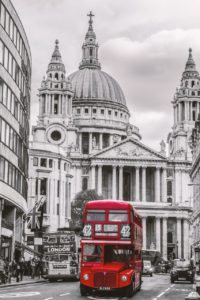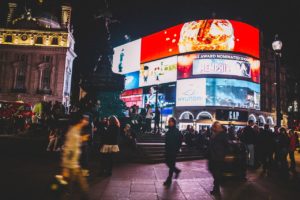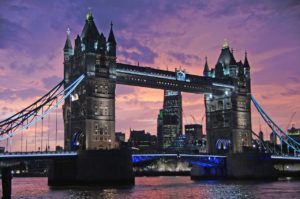Make the Most out of Your London Trip by Visiting These 7 Amazing Places
Disclosure: In our articles, we independently choose products and services to feature that we think you'll find useful. This post contains affiliate links. If you make a purchase after clicking one of our links, we may earn a small commission.Are you visiting London? Great choice! London is an amazing city, with thousands of years of history, and hundreds of things to do and see. Here are the top seven:
Site 1: Big Ben/Parliament
Big Ben is technically the name of the bell inside of Clock Tower (now officially Elizabeth Tower), but is usually used to refer to the tower as well. Big Ben and Parliament is perhaps the most iconic building in all of London, and is visited by millions every year.
If you live in the UK, you can arrange for a tour on the inside of the tower. You must contact your local Member of the House of Lords (MP), and arrange for a pass so that you can tour the inside of the tower and Parliament. If you don’t live in the UK, you can’t tour the inside, but you can have a lovely view of the exterior.
Parliament is the home of the British government, and is where most important decisions regarding the United Kingdom take place. It is officially located in Westminster, along the Thames River.
Fun Fact: Big Ben is officially a UNESCO world heritage site, and has been since 1987.
Tip: If you are going before 2021, you will not hear the bells ring anytime except on New Year’s Eve and Remembrance Sunday. It will also be covered in scaffolding on all except one of the faces of the clock.
Site 2: The British Museum
The British museum is one of the largest museums in the world, at around 990,000 square feet in size, with additional add-ons taking it to almost 1.5 million square feet. It has a larger Ancient Egypt display than that of any other museum outside of Cairo, and it has the Rosetta Stone.
It has one of the most comprehensive museums on Ancient Greece and Rome, housing more than 100,000 pieces, including more material from the Parthenon than is actually present on the Parthenon site. It has massive exhibits on Africa, Asia, Oceania, Australia, British History, European History, and dozens of other topics. The British Museum is an absolute must if you are visiting London.
Fun Fact: The British Museum is the world’s first public museum.
Site 3: Tower Bridge/Tower of London
The Tower Bridge and the Tower of London are two extremely famous sites in London, both of which have a long history. The more recent Tower Bridge was built to allow better bridge crossing. Construction started in 1885, and was finished 10 years later, amounting to a total cost of £1,184,000 (Today’s equivalent: £132,000,000). It is, like Big Ben, one of the most recognizable features of London.
As well as looking beautiful on the outside, you can visit in the inside. Inside, there is a museum describing the history of London and Tower Bridge. Check out the official website for more details.
The Tower of London is even older than the Tower Bridge, having been around since William the Conqueror invaded England from Normandy. It was built in 1078 on Tower Hill, and has been upgraded and refortified many times.
The main place, White Tower, was originally used by William I (William the Conqueror) as his residence, and was used by many people after him. Walls were added around it, to give it more protection, and it was eventually turned into a prison and execution ground.
Many famous people were held in the Tower of London while it was a prison. People such as Queen Elizabeth I (while her sister Mary I was queen), Mary Queen of Scots’ Husband (while her cousin Elizabeth I was queen), Sir Walter Raleigh (also while Elizabeth I was queen – he’s the founder of the Roanoke Colony in Virginia), and many others.
Currently one can see the Crown Jewels of England on display in the Tower of London.
Fun Fact: The Tower Bridge was painted red, white, and blue in 1977 to honor Queen Elizabeth II’s Silver Jubilee (her 25th year as Queen) but was repainted back to blue and white in a restoration in the 2010’s. In 2012 (her Diamond Jubilee) it was again made red, white, and blue, but this time with LED lights.
Fun Fact 2: It is believed that if the ravens ever leave the Tower of London, the kingdom of Britain will fall. In a ccordance with that belief, at least seven ravens are always kept within the walls of the Tower of London, and are under the care of the head Ravenmaster. They have been kept there since the reign of Charles II (1660). During World War II, all but one Raven (Gripp) were killed in German bombings, when Winston Churchill ordered more brought in to “reinforce Gripp”.
ccordance with that belief, at least seven ravens are always kept within the walls of the Tower of London, and are under the care of the head Ravenmaster. They have been kept there since the reign of Charles II (1660). During World War II, all but one Raven (Gripp) were killed in German bombings, when Winston Churchill ordered more brought in to “reinforce Gripp”.
Site 4: St. Paul’s Cathedral
St. Paul’s Cathedral has been around since 1669, and is one of the most famous in all of England. If you want to enter at a time other than the time dedicated for worship, you must pay a fee. It is currently the seat of the Bishop of London for the Anglican Church. For more information, visit the official website.
Fun Fact: There has been a St. Paul’s Cathedral in the same spot since 606 AD, although they have been burned down, demolished, and destroyed.
Site 5: Trafalgar Square
Trafalgar Square was opened to the public in 1844, and has been open to the public ever since then. The most iconic statue there is the 169-foot tall Nelson’s Column, surrounded by four lions. There are many other statues, as well as seasonal decoration. Each year at Christmas time, there is a large Christmas Tree placed in the middle of Trafalgar square, and all throughout the year there are political demonstrations, movie shots, sports, etc.
Fun Fact: Trafalgar square is named after the naval Battle  of Trafalgar. The British forces in the battle were headed by Vice Admiral Lord Nelson, who was killed in the battle, but thanks to his leadership caused the British ships to win, despite being severely outnumbered.
of Trafalgar. The British forces in the battle were headed by Vice Admiral Lord Nelson, who was killed in the battle, but thanks to his leadership caused the British ships to win, despite being severely outnumbered.
Warning: Although Trafalgar Square is partly famous for its feral pigeons, it is illegal to feed pigeons within Trafalgar Square. If you are caught feeding a pigeon, you can get a severe fine. This is due to the fact that pigeons caused serious damage to Trafalgar square (by leaving their droppings everywhere) that led to over £140,000 in damages to Nelson’s column alone.
Site 6: Piccadilly Circus
Piccadilly circus is to London like Times Square is to New York City, except with more statues, monuments, and fountains. Piccadilly Circus is surrounded by dozens of malls, restaurants, stores, and other buildings. Inside of Piccadilly Circus there are fountains, statues, and the London Pavilion, Criterion Theatre, and the Shaftesbury Memorial (and the famous statue of Anteros).
Fun Fact: Occasionally the lights in Piccadilly Circus are turned off. This happens only on special occasions (the death of Winston Churchill in 1965, death of Princess Diana in 1997, and the light out London Campaign of 2007.
Site 7: Buckingham Palace
Buckingham Palace is the official London residence of the reigning monarch of England (currently Queen Elizabeth II). It has been the home of every monarch since Queen Victoria, and was previously the official home of every Queen of England since the 18th century. Today you can also pay for a tour inside of the building, although it is closed certain days and at certain hours for the royalty of England.
Fun Fact: Almost everyone visiting the head of state goes to the Buckingham palace in London.
Other Great Sites
Here are some other great sites that didn’t quite make the list, but are great to see nevertheless:
- Kensington Gardens/Kensington Palace
- Westminster Abbey
- The London Eye
- Victoria and Albert Museum
- Hyde Park
Good Books
If you’re interested in going to London, here are some books you don’t want to miss:
The Fodor’s London 2019 Guide. This book is written by locals, and gives you tips about where to go, what to do, and secrets that other guide books don’t include (such as how to skip lines at certain locations, cool tourist spots, etc.).
The Rick Steve’s London 2019 Guide is another great travel book. This book contains so much information about everything London, on over 600 pages. If you find this comprehensive book too much, consider Rick Steve’s London 2019 Pocket Guide.
Obviously you shouldn’t go anywhere without a map. Although Google is great, if you like a good-old-fashioned hand held map, the Street Smart London Map is one of the best options.
I hope you enjoyed this article. If you found this article helpful, be sure to check out other articles at planandorganize.com. Have fun and safe travels!
Kyle is a staff writer at Plan and Organize™ as well as our marketing coordinator. An undergraduate student at the University of Florida, Kyle enjoys writing about business, education, DIY, history, astronomy, and other science topics. In his free time, Kyle enjoys chess, astronomy, bird-watching and sci-fi.









 RSS - Posts
RSS - Posts